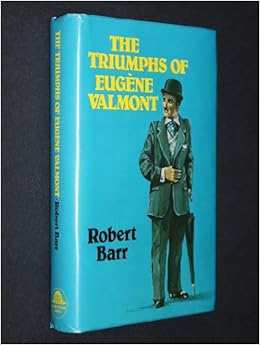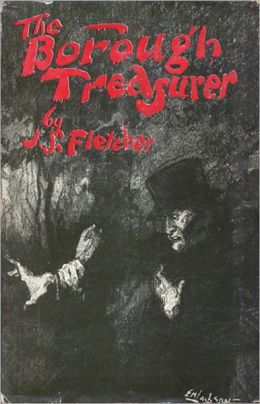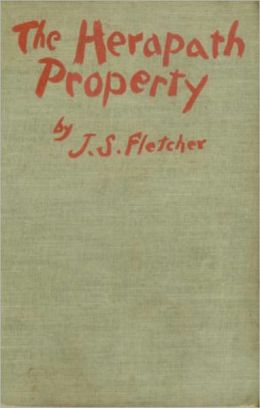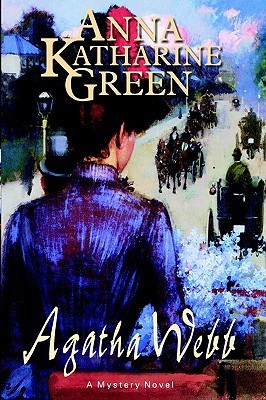By Harvey J[errold] O'Higgins (1876-1929).
1915. 305 pages. $1.30
Collection: 7 stories.
Online HERE.
(1) "The Blackmailers" [reprinted in AHMM, June 2005]
(2) "The Case of Padages Palmer" [Collier's, November 30, 1912]
(3) "Though Mountains Meet Not" [Collier's, December 7, 1912]
(4) "The Kidnappers"
(5) "The Anonymous Letters" [Collier’s, January 4, 1913]
(6) "Barney and King Lear" [Collier’s, September 20, 1913]
(7) "Barney Has a Hunch" [Collier’s, September 5, 1914]
One story featuring Barney not included in the collection was "The Dummy" [Collier’s, December 21, 1912], which is online HERE. Not only was it converted into a Broadway play that ran from April 13, 1914 to October 1914 (200 performances), it was also filmed twice, as a silent in 1917 [see HERE] and a talkie in 1929 [HERE and HERE].
The Adventures of Detective Barney narrates a series of incidents in the career of a messenger boy who, through the influence of Nick Carter and other inspiring authors, concluded that there was more life to be enjoyed in ferreting out crime than in delivering telegrams.
This same "Detective Barney" is also the Barney Cook who is the hero of "The Dummy," one of the most successful plays of the New York theatrical season.
Among the cases to which he devotes his attention are those of the anonymous letter, the blackmailers, the disappearance of Miss Baker, the finding of Padages Palmer and the kidnappers.
Detective Barney is a typical Eastside type, with all the wit and ingenuity of the boy who has lived on the streets, and his adventures make a book that will delight all readers who enjoy original detective stories that are told with humor and a shrewd understanding of human nature. The illustrations, by Henry Raleigh, are particularly good. — THE BOOKSELLER, NEWSDEALER AND STATIONER (February 1, 1915)
A new and amiable variation of the detective type of fiction appears in The Adventures of Detective Barney, by Mr. Harvey J. O'Higgins. Barney's exploits, by the way, have been presented on the stage in a play entitled The Dummy.
Barney is sixteen years of age, the product of the lower west side of New York City. To him the world beyond the North River, the East River and the Harlem River does not exist, or, at any rate, has no obvious reason for existing. Informed that he is about to be taken to Philadelphia, he is puzzled. Hitherto, Philadelphia has meant to him, not a city, but a base ball team. An adventure involving a night in the country leaves him terror sticken.
On the other hand, no aspect of the great city is a mystery to him. Separated from Broadway for the briefest moment, he yearns for the white lights as Private Ortheris in his madness yearned for the Tottenham Court Road.
His grammar is frequently defective, but never his native shrewdness or his resource. An interesting type. May be appear for our amusement in many new incarnations. — "Chronicle and Comment," THE BOOKMAN (March 1915, page 16)
. . . Mr. O'Higgins is frequently asked if the young detective of The Dummy isn't a little too bright for even a bright boy detective. "And I tell them," said Mr. O'Higgins, "that the original of Barney in the play was a real boy, a Secret Service operative, whose amazing adventures would make the exploits of the boy detective in the Meredith case seem like matter-of-course experiences." — Grace Van Braam Gray, "The World of Drama," THE BOOK NEWS MONTHLY (April 1915, pages 405-6)Ellery Queen observed:
. . . Mr. O'Higgins's approach was consistently unusual. Earlier, as the result of having written a series of articles on the Burns detective agency, he saw the possibilities of depicting simple, realistic, private-eye work through the eyes of a typical American boy; his Barney Cook . . . is the most believable boy-bloodhound in the entire short-story field. — Ellery Queen, QUEEN'S QUORUM (1951, page 85)
Mike Grost characterizes these stories this way:
Are these Mysteries? It is unclear whether all the tales in The Adventures of Detective Barney are full-fledged mysteries, in the strictest sense of the term. The tales are certainly full of crime and detection. But the stories often do not center on solving a mysterious situation.
Stories like "The Blackmailers" and "Barney Has a Hunch" show Barney investigating someone. Barney doesn't know all about this man at the start, and learns more about him as the investigation progresses. In this sense Barney is investigating a mysterious situation, and learning answers. This makes these tales mystery stories, in the loosest sense of the term.
But these tales are not "puzzle plot" mysteries. In other words, the tales are NOT works in which a "mysterious situation leads to a logical but surprising solution." — A GUIDE TO CLASSIC MYSTERY AND DETECTION ("Harvey J. O'Higgins")DETECTIVE DUFF UNRAVELS IT.
By Harvey J[errold] O'Higgins (1876-1929).
Horace Liveright.
1929. 303 pages. $2.00
Collection: 8 stories.
Used copies fetch between $300 and $600.
(1) "The Marshall Murder"
(2) "The Gold Frames"
(3) "The Parson Case" [Red Book, November 1925]
(4) "James Illinois Bell" [Red Book, June 1925]
(5) "The Love Charm"
(6) "Abe Enger and the Princess"
(7) "The Fogull Murder"
(8) "The Hefflin Fund"
Something new and rather pleasing in the detective line is Mr. Duff, who with some knowledge of modern psychoanalytical methods, and with very little reliance on fingerprints, bits of torn cloth and cigarette butts, solves eight cases for you in this book. He finds his clues in the complexes, dreams and suppressed desires of the criminals. The solution in each case is logical and inevitable. There is humor and subtlety in the handling—enough to go in a dozen detective stories of the usual kind. Highly recommended. — Walter R. Brooks, "Picked at Random, " THE OUTLOOK (July 17, 1929)
EIGHT cases are cleverly worked out by Duff, who works from mental clews, his method being quite at variance with those of most of his confrères. The subjects are totally unalike and each is handled in a neat psychological manner. — "Notes on New Books," THE BOOKMAN (September 1929; go to page XXV, top right)EQ tells us that:
Detective Duff Unravels It represents the first serious approach to psychoanalytical detection. As the publisher wrote in 1929, every crime is committed in two places—at the physical scene of the crime, where the police investigate it, and in the mind of the criminal. Detective John Duff followed the second trail—deep in the mind of the perpetrator.
He unravels one murder mystery by analyzing the victim's dreams; he discovers the identity of a thief who steals gold picture frames by probing the unconscious fears of the owner's wife; he solves a kidnaping by uncovering the suppressed desires of a beautiful debutante; he even invents a love charm as a psychiatric aid to detection. — Ellery Queen, QUEEN'S QUORUM (1951, page 85)
- Heywood Broun has an elliptical appraisal of Harvey O'Higgins HERE.
- The GAD Wiki entry for O'Higgins is HERE.
- THE THRILLING DETECTIVE website has an entire page devoted to Detective Barney HERE.
- O'Higgins seemed to accept Freudian views of the mind, particularly the power of the subconscious to shape art: "The most popular American novel in the past has been the romantic, because the great need of the American psyche has been to escape the pressure of reality." — "A Note on the Novel," THE NEW REPUBLIC (April 12, 1922)
Category: Detective fiction





























+Wilkie+Collins+-+Painting+by+Rudolph+Lehmann.jpg)








